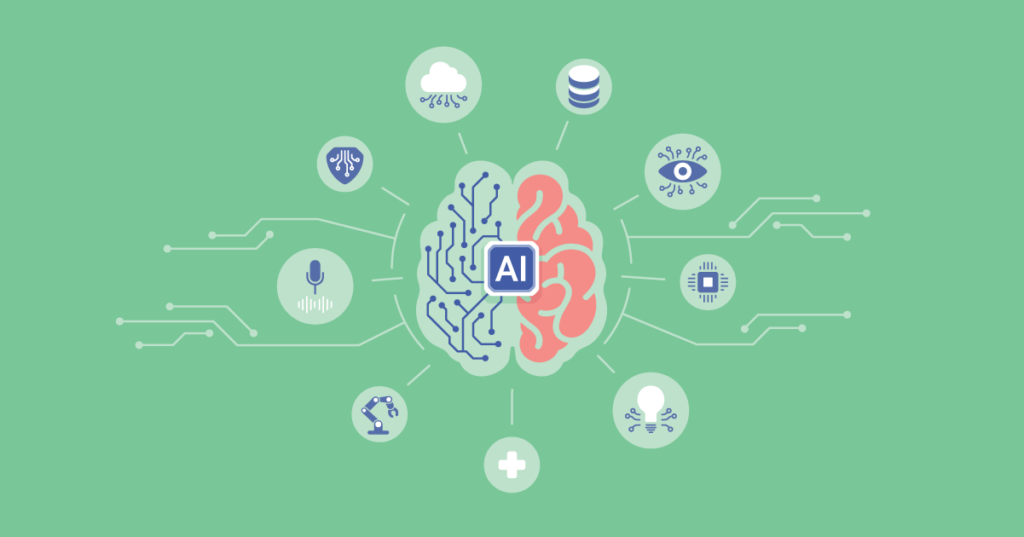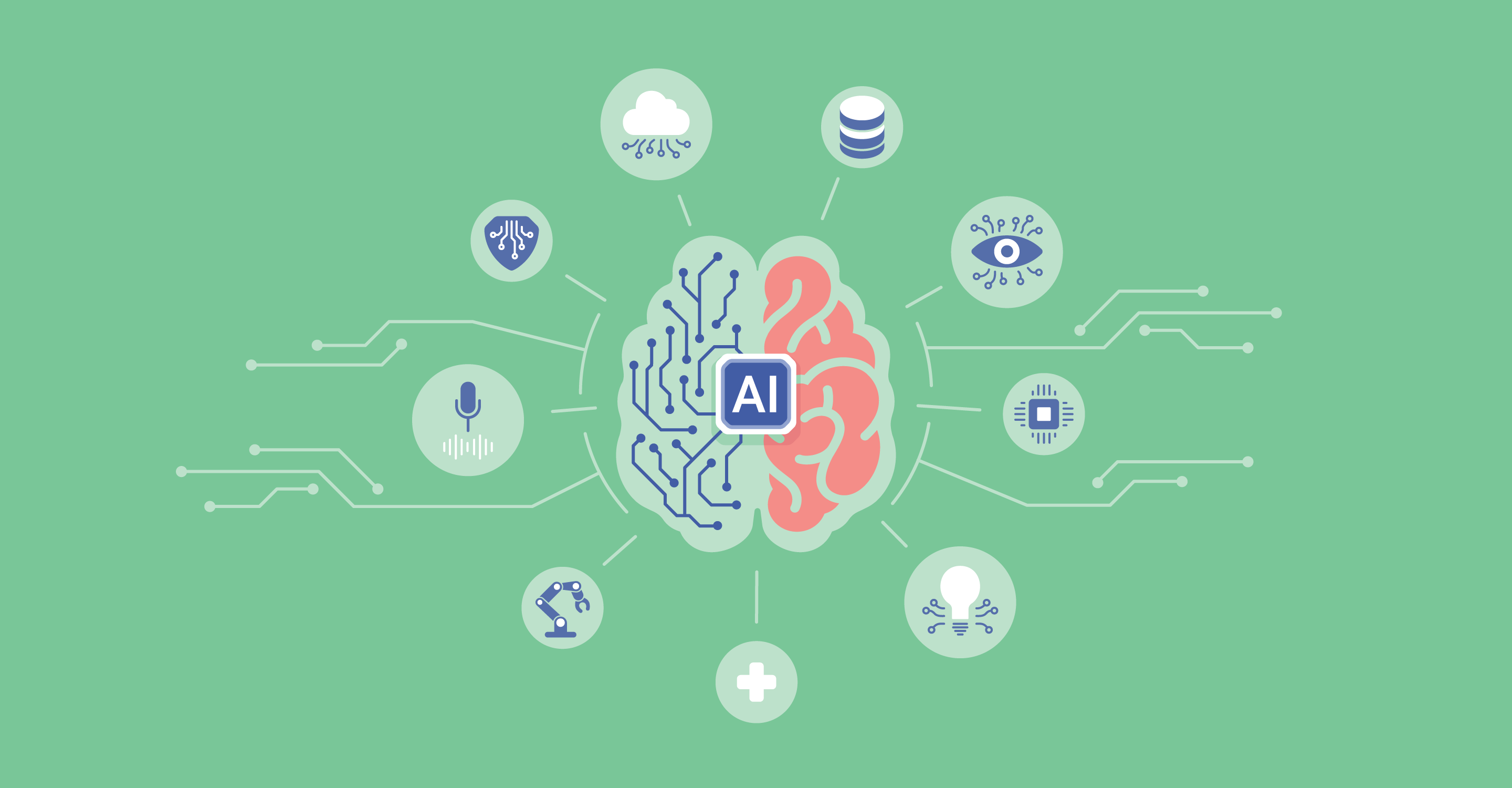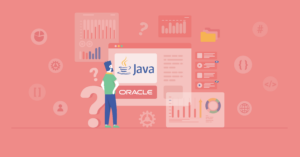From promises of bringing forth an imminent utopia to marking the end of the human race, artificial intelligence (AI) has been the subject of much hype, most of which is insubstantial. In recent years, however, with voice assistants and conversational UIs now dominating both homes and the media, public fascination may have finally reached fever pitch. But, in the age of Siri and self-driving cars, how close are we really to a so-called ‘singularity’? Is AI in its present form a worthy investment for your business? And how does artificial intelligence work today?

AI systems are incredibly versatile. By learning from large amounts of data generated by humans, they are able to perform intelligent searches, discover patterns in complex data, examine both text and images, and act on those findings as programmed. At this point in time, however, no machine can simply learn autonomously. Therefore, the following components are also needed:
- GPUs are an important AI enabler, as they provide the required computing power to not only process massive quantities of data, but to perform reliable calculations.
- The Internet of Things (IoT) is essential to the gathering of data. The IoT may be defined as the total network of personal and household devices that are currently connected to the internet. This network is predicted to reach reach over 100 billion devices by the 2025.
- Advanced algorithms are also needed to optimise intelligent data processing and enable faster multilevel data analysis. This technology is useful in both making sense of naturally complex systems and preempting predictable future events.
Moreover, with the additional help of machine learning APIs, we can plug artificial intelligence into virtually any existing software, thereby enhancing its functionality with cutting-edge AI technologies.
Components of Artificial Intelligence
So to put this realistically, the “AI” technologies that are available today give us new ways to interact with our systems and empower businesses to finally benefit from the opportunities originally posed by big data. But how does artificial intelligence work on a technical level?
AI engineering
Before an AI model can be used, it has to be engineered and trained. AI engineering is a profession that has arisen from the sharp increase in demand for artificial intelligence systems. An AI engineer is an individual whose role it is to develop and employ AI systems, then to apply them in real world scenarios. They are generally tasked with the implementation of AI software, as well as the programming and training of the relevant models on specifically chosen datasets. Maintenance and upkeep is also a key part of AI engineering.
Machine learning
Machine learning refers to the development of complex algorithms that are able to analyse data and make predictions as and when required. For example, machine learning can be used to predict which Netflix series you might wish to watch after your favourite programme, or even the best route for your Uber to take. Beyond these day-to-day applications, however, machine learning is also applied to other industries such as healthcare, digital marketing and retail.
Deep learning
A subset of machine learning, deep learning aims to mimic the pathways of the human brain by making expert use of artificial neural networks (ANNs). With multiple layers of ANNs working together, machines are able to perform tasks such as spotting a face in a mosaic of tiles. This is done through both positive and negative reinforcement, which requires continuous processing without any human intervention at all. A popular form of deep learning is speech recognition, which is what enables your phone’s voice assistant to understand and respond to your questions.
Neural networks
As mentioned above, neural networks are what make deep learning a possibility. Inspired by the human brain, they enable AI learning through processing training examples. For instance, by processing a large data set of 1,000 dog photos, the machine could then produce a single output (e.g. an answer to the question, “is there a dog in the following image?”). In essence, therefore, neural algorithms analyse data to not only discover relevant associations but give new meaning to seemingly random information.
Cognitive computing
Cognitive computing systems are yet another vital AI component. Their main purpose is to improve human decision making by recreating the human thought process in a computer model. This is done by interpreting human language and the subtle meaning behind ordinary images. This way, cognitive computing may be used in speech recognition, sentiment analysis, risk assessment, fraud detection and other areas. Although this was previously reserved for large enterprises, today, cognitive cloud computing is becoming increasingly popular, bringing efficiency and affordability to startups and SMBs at last.
Natural language processing
You may have wondered, “How does artificial intelligence work with Siri?” The answer is Natural Language Processing (NLP). NLP enables computers to accurately recognise, interpret, and even produce human language and speech. Ultimately, its primary objective is to streamline interaction with the machines we use on a day-to-day basis by teaching computers to understand our languages and provide logical and helpful responses. Another example of NLP in action is the Skype Translator feature, which enables users to talk in their native tongues with the translation provided in real time.
Computer vision
Computer vision is an integral part of artificial intelligence that enables computers to derive information from digital images. This technique incorporates both deep learning and pattern identification to reliably interpret graphs, tables, pictures and other content within documents and videos. Computer vision is already revolutionising the healthcare sector today as it may be employed to evaluate x-rays and detect signs of cancer in MRI scans.
ModelOps
When it comes to the practical implementation of artificial intelligence systems in an enterprise situation, model operations (ModelOps) are pivotal. ModelOps is essentially a system of tools and technologies that are used to deploy machine learning and AI systems, and then to monitor and manage them. By employing ModelOps, artificial intelligence software can be governed and scaled as needed. At the same time as this, it enables engineers to view the performance of AI models and make adjustments as needed.
The History of Artificial Intelligence
Surprising though the thought may seem, humanity has been dreaming of sentient robots since the days of Ancient Greece. The myth of Hephaestus and Pygmalion (try saying that seven times) refers to a human-like machine called Talos which was responsible for guarding Crete from incoming pirates and other invaders.
With this allure still deeply ingrained in our collective psyche, it becomes easy to see why any sign of artificial intelligence would be greeted with utmost enthusiasm.
The flipside to this, of course, is that every decade or so, we end up with these random bouts of excitement which may represent some progress in the AI department, but remain in fact far removed from an actual Talos-style homebot for all. Nevertheless, the existing capabilities of AI are undeniably still impressive.
Artificial Intelligence and the Power of Data Analytics
To truly grasp where we stand today, it’s important to clarify our terms. Despite what we hear in the news, google “how does artificial intelligence work” and nine times out of ten, the results will refer to machine learning and data analytics. These are technologies that not only do not constitute actual artificial intelligence, but have also been in existence for a number of unremarkable years.
But what then is novel, or even noteworthy, about machine learning algorithms? Well, because software developers have recently paired them with the treasure trove that is big data analytics, companies are now able to unlock a whole host of exciting possibilities.
For instance, when you are typing up a document in Google Docs or Microsoft’s Office 365, the suites can provide you with grammar and even clever editorial suggestions. Though this feature may be useful and even somewhat entertaining, it is certainly not what comes to mind when the average person thinks of AI.
Edge Artificial Intelligence
Edge AI solutions can be viewed as an alternative to the more commonplace cloud-based AI systems. Edge devices are those that mark the endpoint of a network, where the digital realm meets the physical world, and edge devices can have their own range of AI capabilities.
Edge AI refers to the use of AI models locally on edge devices, such as IoT devices. With edge AI, a real-time processing of data can be achieved. This negates the need for a constant cloud connection. Yet another potential advantage of edge AI is that it enables some devices to make decisions more independently, such as sensors and smart home products.
This is a relatively new field, and as such it has certain vulnerabilities and uncertainties surrounding it. However, with such powerful edge device processors available to users, the presence of edge AI is likely to see an increase in the near future.
Responsible Use of Artificial Intelligence
No discussion of AI would be complete without acknowledging the concerns that many people have. AI has gotten a bad rap from time to time, whether this is down to speculative science fiction, or peoples’ understandable fears of being replaced.
There are plenty of guidelines that relate to the ethical use of AI. In fact, companies like IBM and Google have published their own Responsible AI Practices codes. Here are a few things that can be done to ensure that AI is used responsibly:
- Ensure that the use of AI is always disclosed, whether that’s to the client or to the end user
- Employ reliable, unbiased models of AI, and take measures to avoid any potential biases from arising
- Observe and comply with AI-related laws and regulations, which can vary from one country to the next
- Ensure that decisions are traceable and explainable, so that AI can be held accountable for the choices it plays a part in making
This barely scratches the surface of ethical AI use, but it does illustrate that AI can be used in a responsible way. The reality is that AI is a tool that can change the world for the better, provided that we treat it with respect, responsibility, and ethical consideration.
Benefits of Artificial Intelligence
With huge sums of money being spent towards developing human-like sentience in machines, whilst true consciousness remains decisively out of reach, the future looks bright for artificial intelligence:
1. Reduction in human error
The expression “only human” was born because from time to time we all make mistakes. Computers, however, are not prone to the same mindless errors.
2. Automation of repetitive tasks
While we often perform mundane, repetitive activities, using artificial intelligence enables companies to give their workforce more fulfilling tasks.
3. Low risks for humans
Whether defusing a bomb, exploring space or even dealing with radioactive contamination, we can also employ AI to eliminate risk to human life.
4. Increased availability
One of the many benefits of AI for business is that we can benefit from tireless “employees” who can work for us 24/7, without breaks, fatigue or burnout.
5. Sustainability
Artificial intelligence paves the way for the emerging circular economy as it supports human innovation to build more eco-friendly products and services.
Should You Adopt AI?
And so now, the question that remains is: Is it time for your startup or business to hop aboard the artificial intelligence hype train? The simple answer is a resounding yes! In all likelihood, embracing AI will enable you to stay competitive and provide your customers with a much better user experience.
Nevertheless, every case is unique, so you should never be fooled into thinking that just any piece of AI technology will be sufficient to guarantee your success. Instead, picking the right solution is infinitely more important.
Look to the Smartest AI Solutions for Answers
When deciding whether to invest in AI, it is important to examine the best examples of artificial intelligence used in business today. Without a doubt, these will include Vertex-AI (formerly Google Cloud AI platform), IBM Watson and Microsoft’s Azure Machine Learning Studio.
So how does artificial intelligence work at Software Planet Group? We create powerful, bespoke AI solutions that take advantage of all of these services. By tackling the root cause of your company’s problems, by ensuring your product fulfils the market’s expectations, and by delivering an unparalleled user experience through continuous feedback and timely MVPs, we can help your company find value amidst the saturated hype haystack.



